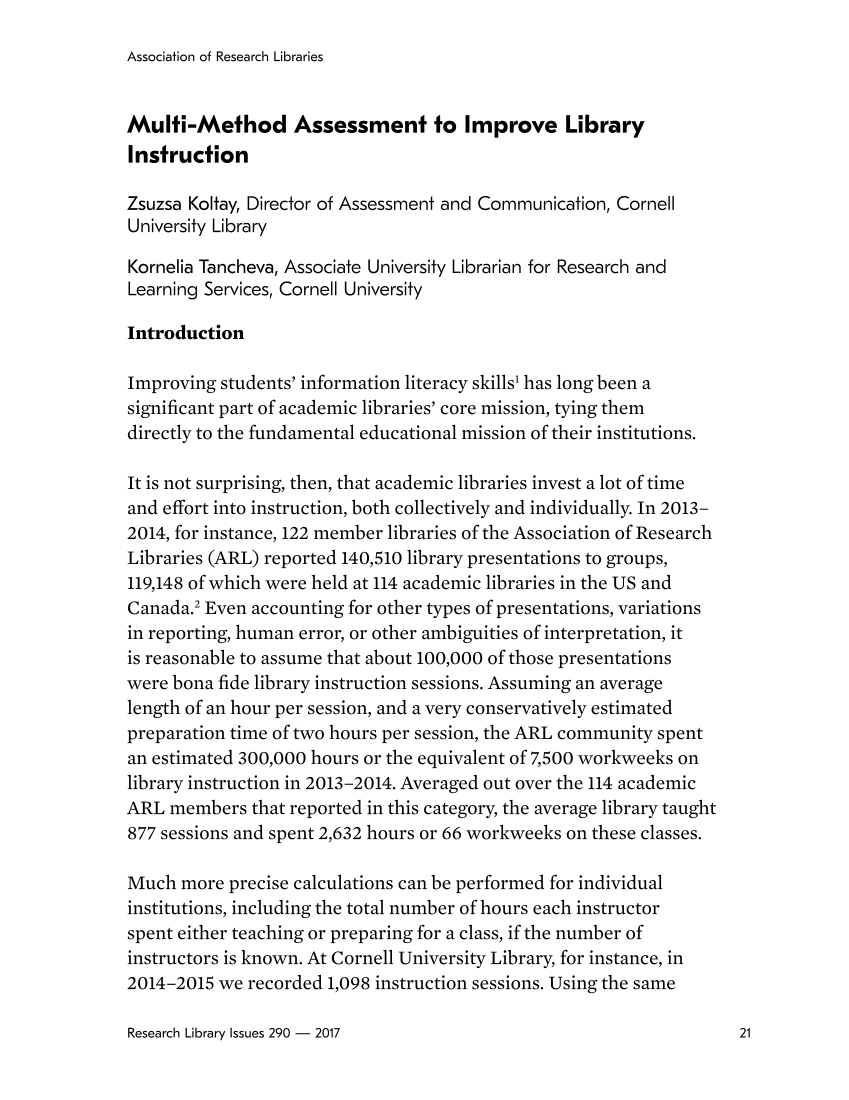21 Association of Research Libraries Research Library Issues 290 — 2017 Multi-Method Assessment to Improve Library Instruction Zsuzsa Koltay, Director of Assessment and Communication, Cornell University Library Kornelia Tancheva, Associate University Librarian for Research and Learning Services, Cornell University Introduction Improving students’ information literacy skills1 has long been a significant part of academic libraries’ core mission, tying them directly to the fundamental educational mission of their institutions. It is not surprising, then, that academic libraries invest a lot of time and effort into instruction, both collectively and individually. In 2013– 2014, for instance, 122 member libraries of the Association of Research Libraries (ARL) reported 140,510 library presentations to groups, 119,148 of which were held at 114 academic libraries in the US and Canada.2 Even accounting for other types of presentations, variations in reporting, human error, or other ambiguities of interpretation, it is reasonable to assume that about 100,000 of those presentations were bona fide library instruction sessions. Assuming an average length of an hour per session, and a very conservatively estimated preparation time of two hours per session, the ARL community spent an estimated 300,000 hours or the equivalent of 7,500 workweeks on library instruction in 2013–2014. Averaged out over the 114 academic ARL members that reported in this category, the average library taught 877 sessions and spent 2,632 hours or 66 workweeks on these classes. Much more precise calculations can be performed for individual institutions, including the total number of hours each instructor spent either teaching or preparing for a class, if the number of instructors is known. At Cornell University Library, for instance, in 2014–2015 we recorded 1,098 instruction sessions. Using the same









































